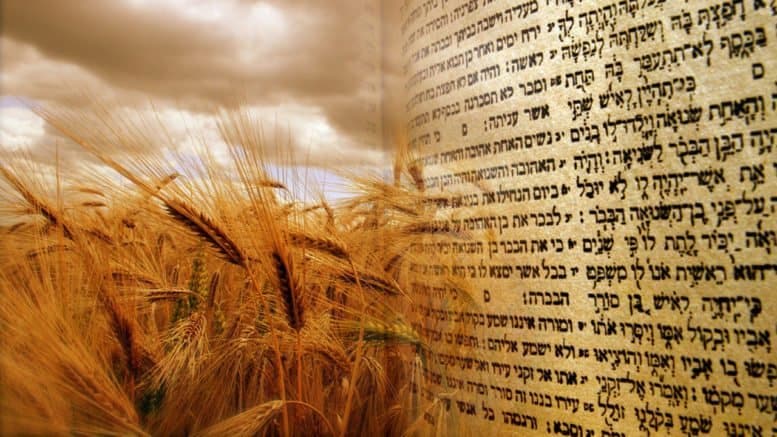In preparation for this day of Shavuot, when the Jewish people received the Torah at Sinai, we’re raising some discussion points about the meaning and practices of the day. Add your voice to the conversation — we’d love to hear what you have to say.
- Most people count down to a milestone: “3 more days of school; 2 more days of school, etc.” But Shavuot comes at the end of counting 49 days, in 7 weeks. Shavuot is the 50th day “of the Omer,” as it were. What does it mean to count up instead of counting down?
- The hero of Megillat Ruth is a non-Jewish heroine — Ruth, the Moabitess. What does it mean to you that this woman is a central figure on the day that commemorates the Jewish people receiving the Torah?
- What does Ruth’s statement of conversion mean to you: “…Where you go, I shall go; and where you stay, I will stay. Your people will be my people, and your God my God…”
- Shavuot has become known as the holiday of cheesecake. What place does “dairy” have in yom tov meals, when Jewish law stipulates that joy is to be found specifically in wine and meat? (אין שמחה אלא בבשר ויין)
- The Temple offering of Shavuot is a grain-offering, known as: “Shtei Halechem.” It is the only mitzvah specific to Shavuot. The holiday that celebrates receiving 613 mitzvot has none. Why?
- Jeopardy Round on Naomi:
- These were the names of Naomi’s daughters-in-law
- These were the names of Naomi’s sons
- This drove Naomi and her husband to leave the Land of Israel for Moav.
- This is how Naomi felt when she returned to the Land of Israel.
- There’s a tradition of decorating the home and synagogue with greenery (and flowers) for Shavuot, which seems to go beyond beautifying the environment. Why might greenery/flowers be particularly appropriate for on Shavuot?
- What does receiving the Torah mean to you?
- If you had stood at Sinai, would you have been glad to receive the Torah? (why/why not)
- If you had stood at the crossroads with Naomi, would you have gone home or gone with her?
- In your estimation, what really happened on the threshing floor?
- If you think the Torah we received today is not the same as the Torah that was given at Sinai, is that for the better or the worse? If for the better, how so? If for the worse, what went wrong?
- Values clarification: Rank the Ten Commandments in the order that they matter to you. Alternatively, purely hypothetically speaking, of course, rank them in the order that you’d eliminate them, if circumstances conspired to prevent you from keeping aall of them.
- One side of the mitzvot listed in Aseret HaDibrot are traditionally understood to be “between man and God,” and the other side to be “between man and man.” Categorize these 10 in other ways. What new insights do you gain from the reshuffle?
- There’s a midrash that God held Mt. Sinai over the heads of Bnei Yisrael like a barrel (הר כגיגית), essentially forcing them to accept the Torah. Does that mean God was a bully (at least in the midrash)? If so, doesn’t that mean there was no “consent” on the part of Bnei Yisrael? In which case, how can this be a day to celebrate?
- Two million people stood at Sinai — 600,000 men, plus all the women and children. And tradition says all Jewish souls ever were there too (see Mayim Bialik on The Late Show with Stephen Colbert). Assuming you don’t actually remember the event, how do you make that experience of Sinai your own?
Chag sameach!
